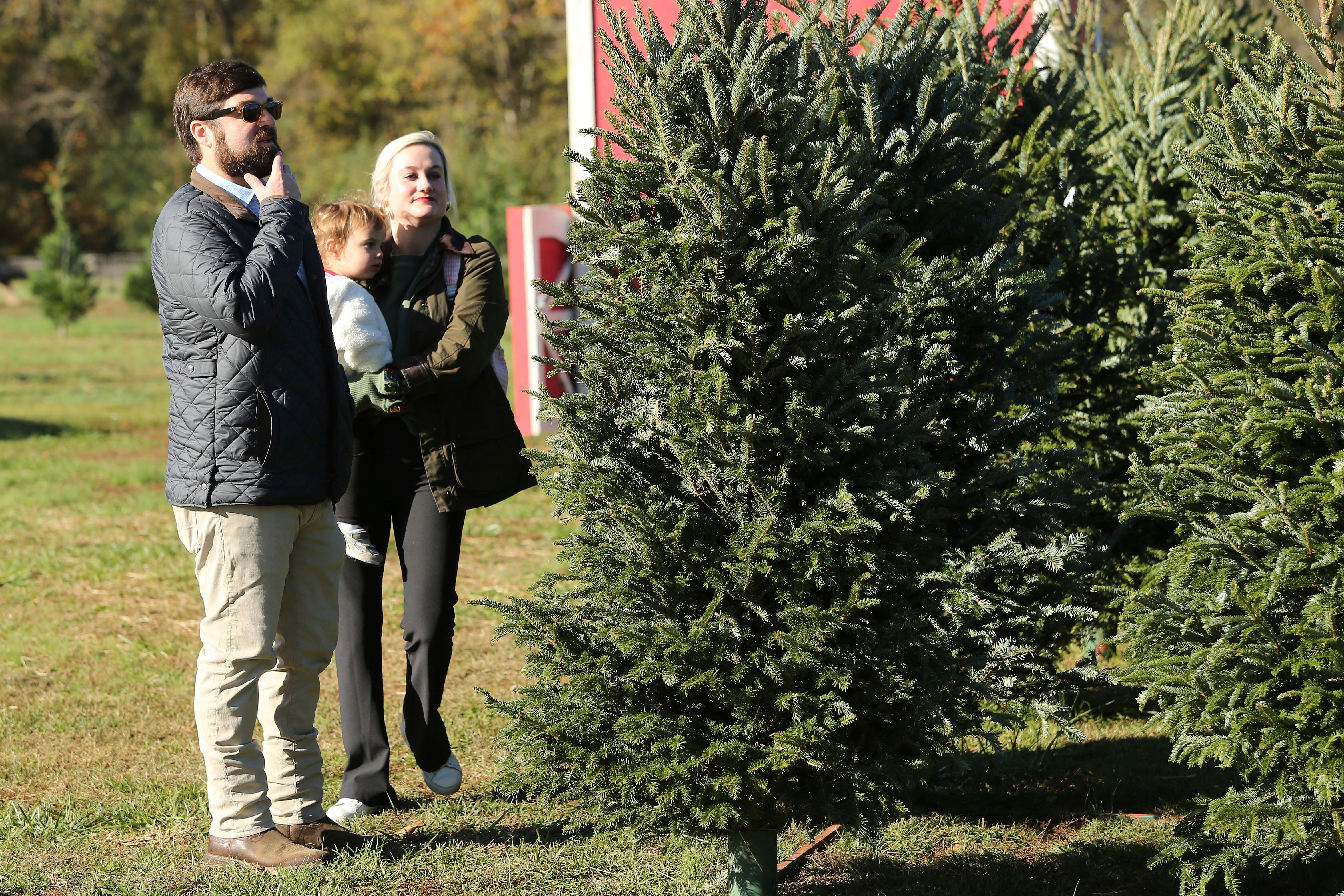How climate change is impacting our Christmas trees
Christmas tree industry experts expect impacts from this year’s historic drought in several years, as farmers report losses
Your support helps us to tell the story
From reproductive rights to climate change to Big Tech, The Independent is on the ground when the story is developing. Whether it's investigating the financials of Elon Musk's pro-Trump PAC or producing our latest documentary, 'The A Word', which shines a light on the American women fighting for reproductive rights, we know how important it is to parse out the facts from the messaging.
At such a critical moment in US history, we need reporters on the ground. Your donation allows us to keep sending journalists to speak to both sides of the story.
The Independent is trusted by Americans across the entire political spectrum. And unlike many other quality news outlets, we choose not to lock Americans out of our reporting and analysis with paywalls. We believe quality journalism should be available to everyone, paid for by those who can afford it.
Your support makes all the difference.Following what is on track to be the hottest year on record and historic drought that’s stricken much of the U.S., concern is spreading regarding the future of the nation’s more than a billion-dollar Christmas tree industry.
Each year, tens of millions of the trees are sold during the holiday season as part of a tradition that goes back to the 1700s in the U.S. Up to 20 different tree species are grown each year, with about 14.5 million cut in 2022. Some are imported from Canada, while nearly 350 million real Christmas trees are growing on farms in all 50 states.
But, climate change-fueled temperatures and drought have resulted in losses for farmers this year, particularly in the Northeast and New England. These reports come after the industry announced a shortage ahead of Christmas 2023 that was tied to an overplanting more than a decade ago and prices rose by a significant amount.
“I know in the Northeast some growers have complained that they’ve had greater death of their seedlings that they’ve planted out than normal. Of course, you don’t expect every tree you set to survive, but some growers have lost 20 percent or more or even their entire crop,” Jill Sidebottom, of the National Christmas Tree Association, told The Independent on Monday.

While these losses won’t affect Americans as much this year, she said the impacts would be felt in coming years.
“Depending on what kind of tree they’re growing, that’s going to be a hole in their inventory five, seven, eight years down the road. So, it’s not so much next year, but it’s several years down the road,” she said. On average, it takes about that long for Christmas trees to reach maturity.
Drought mainly affects smaller and younger trees, and Sidebottom noted that most farms are not irrigated. The trees need at least 50 inches of rain each year, although most conifers prefer drier soils and wetter weather can cause root disease.
A drought very seldomly affects those that are ready for the market, although drought did kill some in the Pacific Northwest several years ago and some mature trees in New England have had their needles fall off and become unsellable. In 2021, a heat dome linked to climate change that killed a billion sea creatures also resulted in crop loss.
“It’s certainly not unusual to have problems with dry conditions. And, of course, people are concerned about global warming [which] can create more wet conditions because as the seas warm up, the atmosphere can hold more moisture. But, it can also create more pockets of drought. More extremes...” said Sidebottom. “And so, I think as the industry moves forward in time, there’s a lot of work at universities looking at producing trees, developing trees that are more bullet proof of extremes. And so, as the industry moves forwards, that’s a concern.”

Consumers should also be aware of the climate conditions when they get their trees.
Most conifers, like pine trees, need weeks of exposure to temperatures below 40 degrees to overcome their dormant stages, when they are alive but not actively growing. Those that are actively growing when they are cut aren’t going to perform as well.
“Most trees that are commercially grown now, most firs, hold their needles really well. And, especially if we get cold weather before they’re cut. And, that certainly happened this year, for the most part, across the board,” said Sidebottom.
But, with people wanting trees earlier and earlier this year, and fall getting warmer, these patterns could be disrupted.
“That’s really kind of the worst problem with our industry now, is people wanting trees so early, shipping trees so early...” she said.




Join our commenting forum
Join thought-provoking conversations, follow other Independent readers and see their replies
Comments